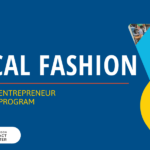Greg is a paramedic, a brilliant mechanic, an artist, a husband, and a dad. He cares about doing the right thing and supporting people on and off the job. He doesn’t yet see himself as a high-potential leader, but that’s exactly what he can be.
Someday, this ethical, caring, purpose-driven person will inspire the next generation. He will lead from a position of natural authority born of character, a solid work ethic, and consistent choices to do the right thing — all hallmarks of high-performing conscious leaders.
But what happens if Greg never embraces that role? How do we make sure people with promise don’t get sidetracked, lose their ways, or never believe in themselves enough to reach their leadership potential?
Game-changing strategies require potent leadership
Changing ourselves, at least a little bit, is a first step in changing the game.
People enter the business world with great potential every day, but they frequently fail to realize that potential. What gets in the way? In my experience, a key component is identity: how we see ourselves.
The identity we hold may not reflect the reality of our potential or our progress. We may under- or overestimate our abilities. We see ourselves as incapable or lacking in some way, or we are so certain we “already know” that we stop being curious or pushing the boundaries.
Why not upgrade our perceptions of ourselves as we grow on the job? In work processes, the old buzz phrase “incremental improvement” describes how companies keep up with changes and get better along the way. Making micro identity shifts is the parallel in our careers. It’s not just about acquiring new skills and developing capacity to handle more complex challenges; it’s about upgrading how we see ourselves as leaders, one micro identity shift at a time. And the good news is that opportunities to do that are all around us.
Everyday work challenges offer opportunity to build leadership
For example, let’s imagine that Greg faced an extremely complex situation at work last week. The danger to his program and its funding was real. The situation was politically and emotionally messy, and it was full of professional and relational landmines.
He got through it, but he was bruised and beat up by the process. He didn’t feel like a success. He felt his failures more acutely than anything he may have learned through the experience. All he could think of were the “woulda, coulda, shouldas.” Regret and guilt about what he had done wrong and worries about what would happen next filled his thoughts to suffocation. It was something he was sure he never wanted to go through again.
It starts with awareness and character
These emotions, coupled with a drive to do it differently in the future, are signs of high character in action. Those who care enough to feel the pain of awareness — and then use that pain as motivation to do something to grow their abilities — may avoid similar negative situations in the future, or at least navigate them with less personal wear and tear.
Reflecting with an intention to learn and grow ourselves from the situations work throws at us gives us constant on-the-job professional development. Who we are evolves as we learn more, do more, see new perspectives, do better, grow, and develop as a conscious professional. What is authentic to us shifts.
While Greg had honest and valid regrets about what he went through, he would benefit from seeing the other sides of the situation as well. He did survive — and, in a sense, triumphed. These are qualities worth enhancing and building.
Perhaps there were times he stepped in and prevented the situation from getting worse. He helped calm several co-workers and prevented further escalation by framing the issue from a neutral perspective. He used self-restraint to stay outwardly calm and forward-focused. He took on a tough situation and made it to the other side — and if he faces something similar in the future, he now knows at least one way to succeed, next time with more margin.
Someone like Greg is better because of such an experience. He is wiser, more capable, and battle-tested. But which part of the experience will he let define him? Will he come out more resolved to use what he learned to do it better in the future — recognizing his strengths and drawing on them? Or will he let the anxiety and pressure of his missteps win the day? What will he allow to define the person he wakes up as tomorrow morning?
If Greg is to get the best out of his ordeal, he needs to embrace the new awareness and growth he experienced and let that redefine how he sees himself.
That’s a conscious choice any of us can make in situations we face every day. How we see ourselves matters, and if we want to reach toward our potential and gain new insights from our experiences, that identity can be upgraded — and each of those upgrades is a micro identity shift.
Potential — especially leadership potential — is realized as a matter of having a mindset of choice in our experiences. Decisions define our leadership. If you feel you have no choice in your identity and it’s just “who you are,” this is a great place to begin to see more options.
Every challenge and experience is a chance to grow
In her book, “Mindsets: The New Psychology of Success,” Dr. Carol Dweck defines the two basic human reactions to challenge as adopting a growth mindset or a fixed mindset.
Those with a growth mindset see themselves as malleable beings in the act of becoming something greater than they are right now. Tackling tough problems is an opportunity to grow. Failures are merely stepping-stones to eventual success, because these individuals know they can apply what was learned from the experience.
In contrast, those with a fixed mindset see their intelligence and skill-sets as static and somewhat permanent. They are trapped in the “tyranny of now.” Their minds whisper: “What you have now is all there is and the best you can do. Manage it wisely.” Thus, challenges aren’t opportunities to grow. They are risks of being exposed. A person with a fixed mindset might say: “I’m just not good at _____. Some people were born good at that, and I’m just not one of them.” Rather than a starting point of learning, this perception of ability is the end point. Those with a fixed mindset also solidify their traits as unchanging. They may say things like, “I’m always so impulsive!” or “I’m not a people person.”
Do you see how having a fixed mindset can rob a person of his or her potential?
For those who wish to deliberately develop themselves to meet the demands of their personal mission, micro identity shifts account for an evolving sense of self in which we have slightly new intentions, slightly new levels of understanding, and a resolve to experiment with new approaches every day. Whether we have had work experiences that strengthened our self confidence or traumatic events we had to recover from, we build meaning and become more fully ourselves based on how we interpret what happened from our current vantage points. Sometimes we grow because we set our sights on a positive future, and sometimes we make shifts because we never want to experience the same ordeals again.
How we choose to see our current and past challenges drives the impact they have on our evolving capability and identity. As we develop ourselves over time to build the skills we need to support the causes we care about, it changes our beliefs about who we are and transforms our identity. These changes then influence how we see situations in the future, providing new levels of depth and choice with which to deal with the issues we encounter.
If you think back over your career — however long or short — you will notice times when your sense of your capabilities shifted. Like Greg, you may not have seen yourself as a leader, but you found yourself acting as one. Eventually an updated identity — as a competent leader able to make decisions and address complex problems — catches up with your skills, one micro identity shift at a time.
What are you capable of?
Growth comes by pausing and reflecting on why we do what we do. When we take a reflexive, auto-pilot response and bring it under review, it gives us some perspective. Looking at situations objectively, we can choose what we want to do with them: Is it something we want in our lives or not? Is it consistent with our values? Do we want to change how we respond? Is there something we need to learn or practice?
We grow each time we do this, and we change who we are just a little bit. What is authentic and genuine for us changes. Each time we do this, it’s perfectly legitimate to “update the file” we keep on ourselves and our capabilities. As we do that, we make a small change in how we see ourselves; we make a micro identity shift. Many small shifts added up are how we change careers, break into new markets, or build the courage to try what we could not have done before.
This inner transformation of a gradually shifting and evolving identity is reinforced by the outer transformation of our abilities.
Which comes first? It depends. Sometimes you “fake it ’til you make it” and try on new skills before you can update your internal perspective. Sometimes you believe yourself forward. You take a leap of faith that you are someone who can take on that next challenge, and then you work to achieve it.
Getting familiar with the territory of micro identity shifts is an important tool for the self-directed individual. Congruence between your inner sense of self and your outer capabilities strengthens your ability as an authentic leader to craft your own developmental trajectory. Regardless of where you started, or where you are right now, these small shifts in identity help make you an ever more powerful leader of change.





